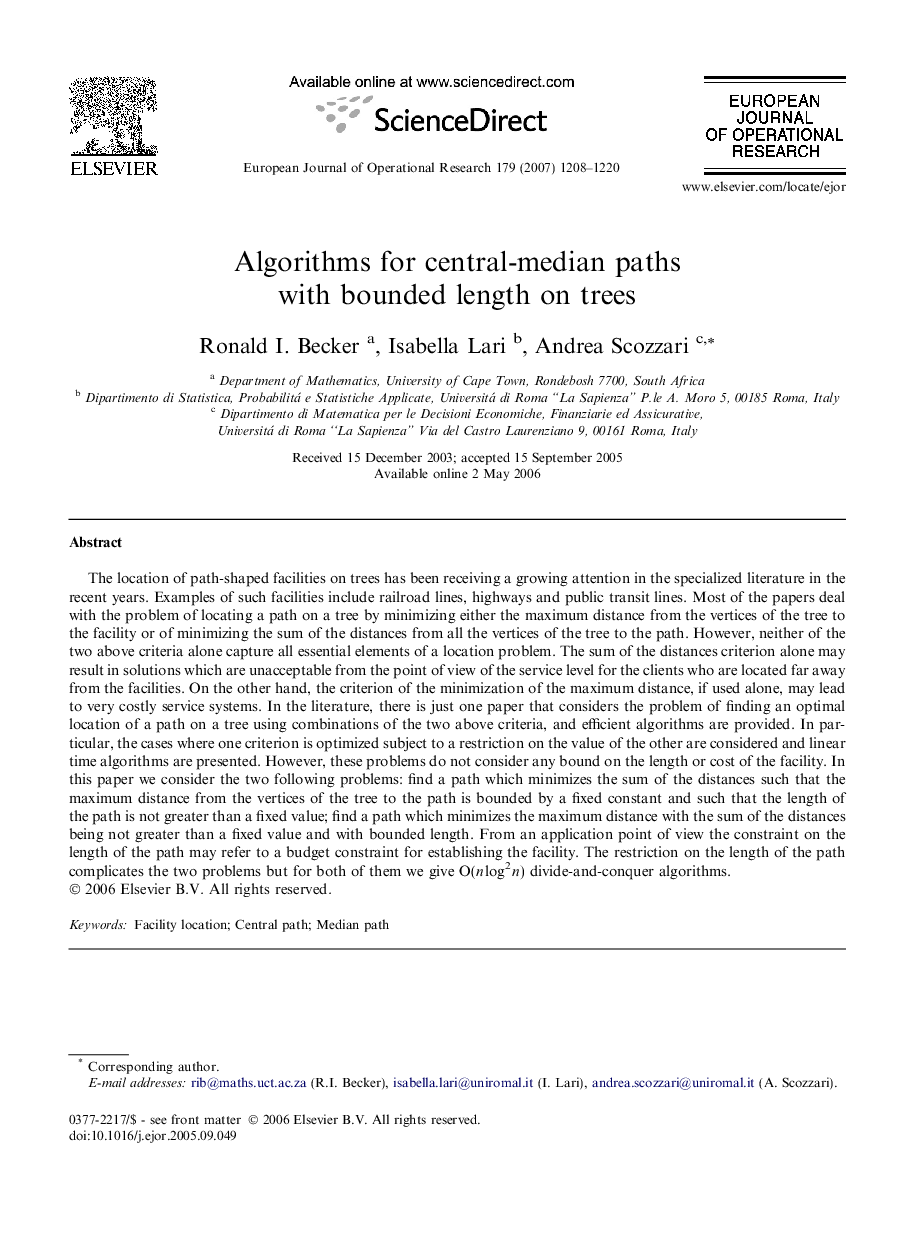| Article ID | Journal | Published Year | Pages | File Type |
|---|---|---|---|---|
| 483183 | European Journal of Operational Research | 2007 | 13 Pages |
The location of path-shaped facilities on trees has been receiving a growing attention in the specialized literature in the recent years. Examples of such facilities include railroad lines, highways and public transit lines. Most of the papers deal with the problem of locating a path on a tree by minimizing either the maximum distance from the vertices of the tree to the facility or of minimizing the sum of the distances from all the vertices of the tree to the path. However, neither of the two above criteria alone capture all essential elements of a location problem. The sum of the distances criterion alone may result in solutions which are unacceptable from the point of view of the service level for the clients who are located far away from the facilities. On the other hand, the criterion of the minimization of the maximum distance, if used alone, may lead to very costly service systems. In the literature, there is just one paper that considers the problem of finding an optimal location of a path on a tree using combinations of the two above criteria, and efficient algorithms are provided. In particular, the cases where one criterion is optimized subject to a restriction on the value of the other are considered and linear time algorithms are presented. However, these problems do not consider any bound on the length or cost of the facility. In this paper we consider the two following problems: find a path which minimizes the sum of the distances such that the maximum distance from the vertices of the tree to the path is bounded by a fixed constant and such that the length of the path is not greater than a fixed value; find a path which minimizes the maximum distance with the sum of the distances being not greater than a fixed value and with bounded length. From an application point of view the constraint on the length of the path may refer to a budget constraint for establishing the facility. The restriction on the length of the path complicates the two problems but for both of them we give O(n log2 n) divide-and-conquer algorithms.
